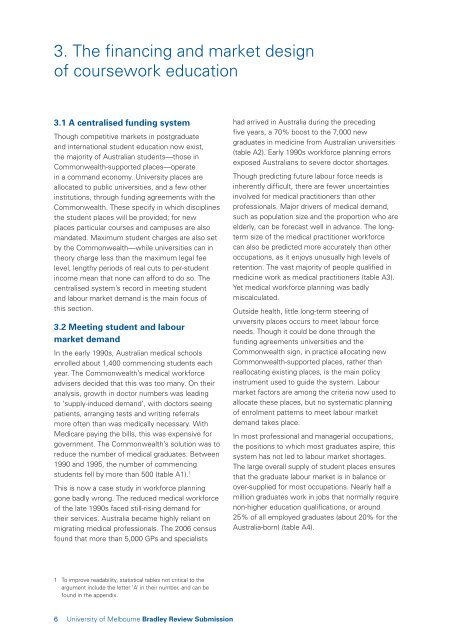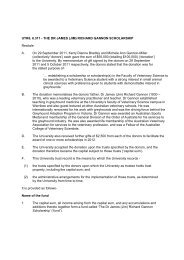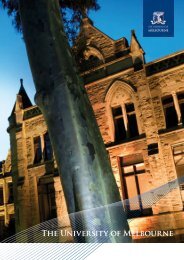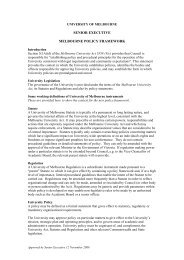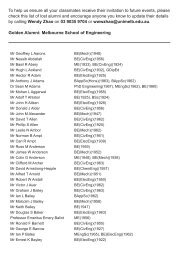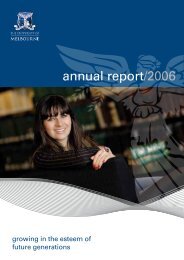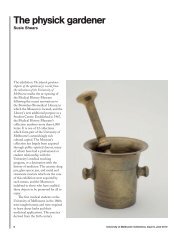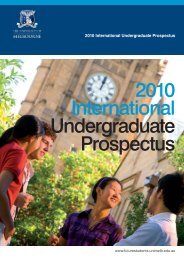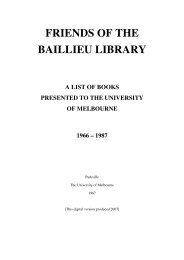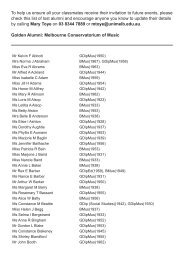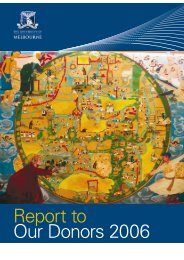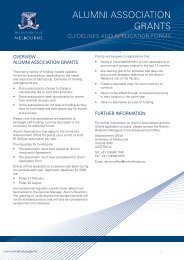Review of Australian Higher Education The Bradley Review
Review of Australian Higher Education The Bradley Review
Review of Australian Higher Education The Bradley Review
Create successful ePaper yourself
Turn your PDF publications into a flip-book with our unique Google optimized e-Paper software.
3. <strong>The</strong> financing and market design<br />
<strong>of</strong> coursework education<br />
3.1 A centralised funding system<br />
Though competitive markets in postgraduate<br />
and international student education now exist,<br />
the majority <strong>of</strong> <strong>Australian</strong> students—those in<br />
Commonwealth-supported places—operate<br />
in a command economy. University places are<br />
allocated to public universities, and a few other<br />
institutions, through funding agreements with the<br />
Commonwealth. <strong>The</strong>se specify in which disciplines<br />
the student places will be provided; for new<br />
places particular courses and campuses are also<br />
mandated. Maximum student charges are also set<br />
by the Commonwealth—while universities can in<br />
theory charge less than the maximum legal fee<br />
level, lengthy periods <strong>of</strong> real cuts to per‐student<br />
income mean that none can afford to do so. <strong>The</strong><br />
centralised system’s record in meeting student<br />
and labour market demand is the main focus <strong>of</strong><br />
this section.<br />
3.2 Meeting student and labour<br />
market demand<br />
In the early 1990s, <strong>Australian</strong> medical schools<br />
enrolled about 1,400 commencing students each<br />
year. <strong>The</strong> Commonwealth’s medical workforce<br />
advisers decided that this was too many. On their<br />
analysis, growth in doctor numbers was leading<br />
to ‘supply-induced demand’, with doctors seeing<br />
patients, arranging tests and writing referrals<br />
more <strong>of</strong>ten than was medically necessary. With<br />
Medicare paying the bills, this was expensive for<br />
government. <strong>The</strong> Commonwealth’s solution was to<br />
reduce the number <strong>of</strong> medical graduates. Between<br />
1990 and 1995, the number <strong>of</strong> commencing<br />
students fell by more than 500 (table A1). 1<br />
This is now a case study in workforce planning<br />
gone badly wrong. <strong>The</strong> reduced medical workforce<br />
<strong>of</strong> the late 1990s faced still-rising demand for<br />
their services. Australia became highly reliant on<br />
migrating medical pr<strong>of</strong>essionals. <strong>The</strong> 2006 census<br />
found that more than 5,000 GPs and specialists<br />
had arrived in Australia during the preceding<br />
five years, a 70% boost to the 7,000 new<br />
graduates in medicine from <strong>Australian</strong> universities<br />
(table A2). Early 1990s workforce planning errors<br />
exposed <strong>Australian</strong>s to severe doctor shortages.<br />
Though predicting future labour force needs is<br />
inherently difficult, there are fewer uncertainties<br />
involved for medical practitioners than other<br />
pr<strong>of</strong>essionals. Major drivers <strong>of</strong> medical demand,<br />
such as population size and the proportion who are<br />
elderly, can be forecast well in advance. <strong>The</strong> longterm<br />
size <strong>of</strong> the medical practitioner workforce<br />
can also be predicted more accurately than other<br />
occupations, as it enjoys unusually high levels <strong>of</strong><br />
retention. <strong>The</strong> vast majority <strong>of</strong> people qualified in<br />
medicine work as medical practitioners (table A3).<br />
Yet medical workforce planning was badly<br />
miscalculated.<br />
Outside health, little long-term steering <strong>of</strong><br />
university places occurs to meet labour force<br />
needs. Though it could be done through the<br />
funding agreements universities and the<br />
Commonwealth sign, in practice allocating new<br />
Commonwealth-supported places, rather than<br />
reallocating existing places, is the main policy<br />
instrument used to guide the system. Labour<br />
market factors are among the criteria now used to<br />
allocate these places, but no systematic planning<br />
<strong>of</strong> enrolment patterns to meet labour market<br />
demand takes place.<br />
In most pr<strong>of</strong>essional and managerial occupations,<br />
the positions to which most graduates aspire, this<br />
system has not led to labour market shortages.<br />
<strong>The</strong> large overall supply <strong>of</strong> student places ensures<br />
that the graduate labour market is in balance or<br />
over-supplied for most occupations. Nearly half a<br />
million graduates work in jobs that normally require<br />
non-higher education qualifications, or around<br />
25% <strong>of</strong> all employed graduates (about 20% for the<br />
Australia-born) (table A4).<br />
1 To improve readability, statistical tables not critical to the<br />
argument include the letter ‘A’ in their number, and can be<br />
found in the appendix.<br />
<br />
University <strong>of</strong> Melbourne <strong>Bradley</strong> <strong>Review</strong> Submission


